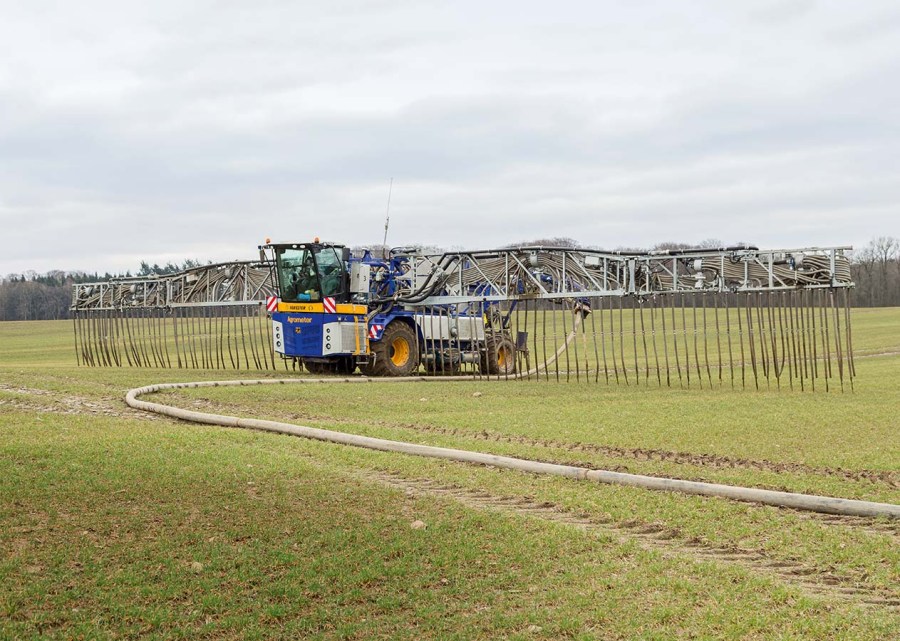The majority of readers will be familiar with umbilical slurry systems, most of which are based on tractor-mounted reelers. In contrast, German outfit Hamester runs four Agrometer self-propelled units … to help it shift 975,000m³ of slurry every year
It’s early March, and an icy wind is blowing over the huge fields of the former GDR. But despite the cold, we can feel spring is just around the corner. You can just sense it, and the birds are chirping away. We caught up with Björn Salzwedel, manager of contracting business Hamester, based in Mühlen-Eichsen in northern Germany.
Employing 40 staff, Björn manages the machinery, liaising with customers when they need to be out on farm. The main focus of the contracting business is spreading slurry, and they’re now at their busiest time
of year. The machinery line-up includes four self-propelleds from Danish firm Agrometer (SDS7000 and SDS8000 models) as well as a pair of trailed reel applicators. 180m3 per hour
So why are umbilical systems not that popular in Germany? Björn reckons it is the time taken to get a system set up that has limited its appeal. “Once the hose has been laid out to the field, the pump has been set up and the applicator is on its marks, we can spread more than 180m³ per hour,” he says.
The time required to set up the machines is worth the effort in the big east German fields, especially if the pump doesn’t have to be moved several times per day. But in smaller fields the system cannot compete with highoutput tri-axle slurry tankers, although the latter tanker loses out in terms of weight. An SDS7000 weighs around 16.5t with the full hose rolled up, dropping to 10.6t when the pipe is laid out
For more up-to-date farming news and reviews click here and subscribe now to profi for just £3.99 an issue.






